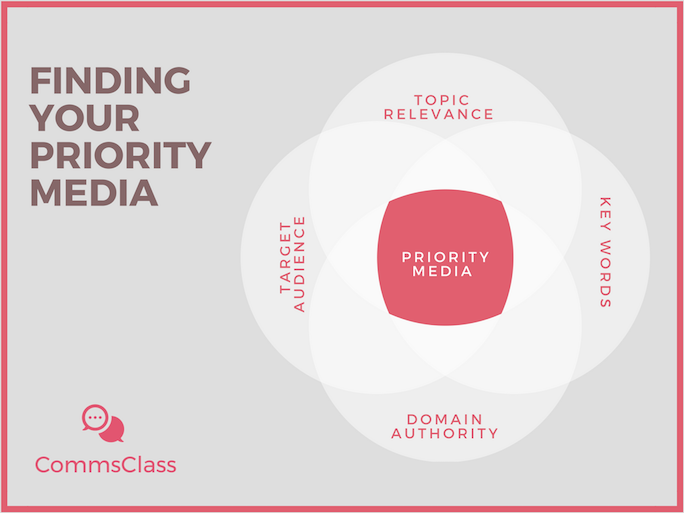Formula for a Winning Publicity Campaign: Expert Guide to Effective Media Relations
Introduction: Creating an Effective Publicity Strategy That Respects Media Relationships
In today’s digital landscape, earning quality media coverage requires strategic planning and relationship building. Many organizations damage potential media relationships by blasting generic press releases to extensive journalist lists. This comprehensive guide outlines a proven formula for a winning publicity campaign that generates meaningful coverage while building valuable media relationships.
What Is Formula for a winning publicity campaign?
A “Formula for a winning publicity campaign” is a strategic framework that helps organizations effectively communicate with media outlets to generate meaningful coverage while building valuable relationships with journalists. Unlike outdated approaches that blast generic press releases to large distribution lists, this formula focuses on quality over quantity.
Carve out your priority media

What You’ll Learn:
Step 1: Strategically Identify Your Priority Media Contacts
Quality over quantity is essential for publicity success. Rather than attempting to reach hundreds of journalists with minimal results, focus your efforts on a carefully curated list based on these critical criteria:
Topic Relevance
Identify journalists who regularly cover your industry or have demonstrated interest in similar stories. Media relevance is crucial—pitching a hospitality venue to a fashion correspondent wastes everyone’s time and damages your credibility.
Target Audience Alignment
Analyze publication media kits to understand their audience demographics. Effective publicity campaigns target outlets whose readers, listeners, or viewers align with your ideal customer profile. Consider:
- Geographic location of the audience
- Interest areas and lifestyle preferences
- Consumption behaviors and patterns
Keyword Performance
Conduct thorough keyword research using Google News to identify which outlets consistently rank for terms relevant to your announcement. For example, searching “PR Consultant Melbourne” might reveal specific publications like The Australian, AdNews, and Marketing Magazine Australia that should become priority targets.
Domain Authority Evaluation
Domain authority (DA) predicts how well websites rank in search results. Use tools like the Moz Toolbar to:
- Measure your own website’s domain authority
- Identify media outlets with higher DA scores than your site
- Prioritize these high-authority outlets for potential backlinks
By applying these four criteria, you’ll develop a focused, highly relevant media list that maximizes your publicity campaign’s effectiveness.
Step 2: Develop a Secondary Media Communication Strategy
Not every media contact will make your priority list, but maintaining relationships remains important. Create an organized system for broader media updates:
- Establish a dedicated media resource center on your website
- Implement subscription functionality using RSS or email marketing platforms like MailChimp
- Always obtain permission before adding journalists to your distribution list
- Include automatic unsubscribe options in all communications
This approach respects journalists’ preferences while keeping your brand on their radar for future opportunities.
Step 3: Craft Personalized Media Angles
Your priority contacts deserve individualized attention. Develop custom pitches that align with each journalist’s specific interests and publication needs:
Visual Story Opportunities
Publications with strong visual elements often run stories accompanied by compelling imagery. Provide:
- Detailed descriptions of potential photo opportunities
- High-quality images if the outlet accepts submitted photography
- Creative visual concepts that complement your announcement
Trend-Based Narratives
Position your announcement within broader industry trends by:
- Providing multiple examples that establish pattern recognition
- Including credible research and statistics from authoritative sources
- Offering expert commentary from recognized industry voices
Specialized Content Formats
For food and beverage announcements, consider offering:
- Professionally tested recipes with appropriate portion sizes
- Compelling introductory text that establishes relevance
- Professional food photography that meets publication standards
Step 4: Understand Publication Timelines
Effective publicity campaigns respect editorial calendars. Different media formats operate on distinct timelines:
| Publication Type | Lead Time Required |
|---|---|
| Online Media | 2+ weeks (can publish immediately but advance notice preferred) |
| Newspapers – Daily Sections | 2-4 weeks |
| Newspapers – Weekly Supplements | 6-8 weeks |
| Monthly Magazines | 3-6 months |
| Quarterly Publications | 6-12 months |
Timing your outreach appropriately demonstrates media relations expertise and increases your chances of coverage.
Step 5: Prepare Comprehensive Media Materials
Develop a complete media kit before initiating outreach, but avoid overwhelming journalists with attachments. Instead, mention available resources and provide upon request:
- Concise media release with announcement details
- Organizational backgrounder covering Who, What, Where, When, Why and How
- Professional photography in appropriate formats:
- High-resolution files (minimum 2MB)
- Low-resolution files (minimum 500KB)
- JPEG format, color, minimum 300 DPI
- Complete caption information and photographer credits
- Product specifications (menus, wine lists, technical details as appropriate)
- Professional biographies for all organizational spokespeople
Step 6: Build Authentic Media Relationships
Your carefully crafted pitch requires name recognition to avoid the spam folder. Cultivate relationships through:
- Meaningful engagement with journalists’ work through substantive comments
- Social media monitoring via private Twitter lists to understand interests and perspectives
- In-person networking at industry events where media contacts may be present
- Product sampling or experience invitations (budget permitting) that allow hands-on evaluation
Who Should Enroll?
The formula for a winning publicity campaign is mainly for businesses or organizations that want to get noticed more and connect with specific groups of people effectively. Depending on the product or service, this could include:
-
Different Ages and Interests: For example, parents in their 30s and 40s or people interested in fitness.
-
Local Shoppers: For stores with physical locations, targeting local residents who can easily visit.
-
People with Specific Interests: Like those into health or music, depending on what’s being sold.
-
Seasonal Shoppers: Targeting people shopping more during certain times of the year like holidays.
Conclusion: Implementing Your Winning Publicity Formula
The formula for a winning publicity campaign combines strategic targeting, personalized outreach, and relationship building. By following these six steps, you’ll:
- Build valuable media relationships rather than alienating journalists
- Generate higher-quality coverage in publications that reach your target audience
- Enhance your brand reputation through professional communications practices
- Improve your search visibility through high-authority backlinks
- Establish industry expertise through strategic content placement
This approach requires more initial effort than mass distribution, but delivers superior results through respect for media professionals and strategic communications planning.
After you make payment, we will send the link to your email then you can download the course anytime, anywhere you want. Our file hosted on Pcloud, Mega.Nz and Google-Drive
KING OF COURSE – The Difference You Make
More Courses: Business & Sales
Q & A
Related products
Internet Marketing
SEO & Web Design
SEO & Web Design
SEO & Web Design
Internet Marketing
SEO & Web Design
SEO & Web Design
Build Creative Website Using HTML5 & CSS3 & jQuery & Bootstrap














Reviews
There are no reviews yet